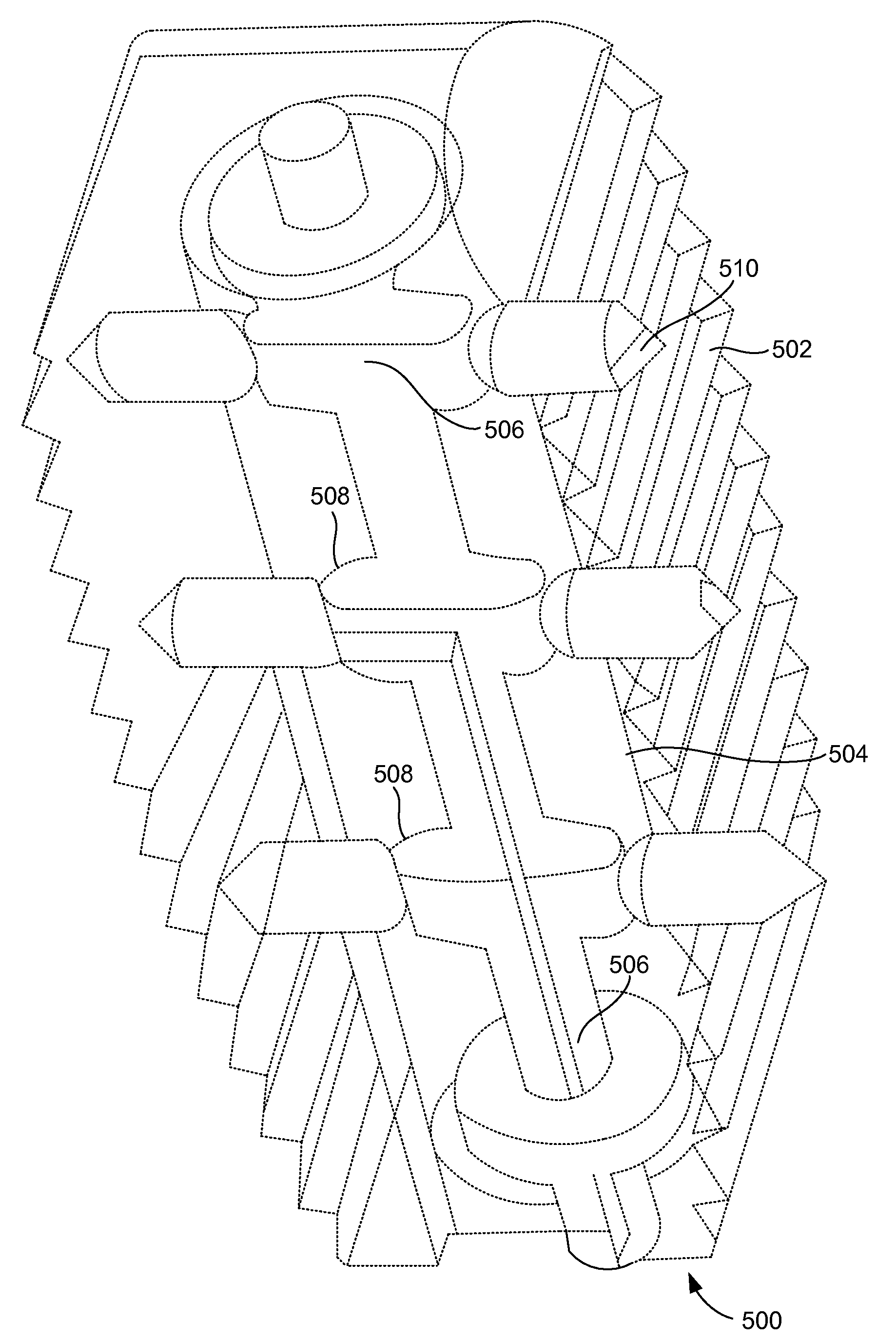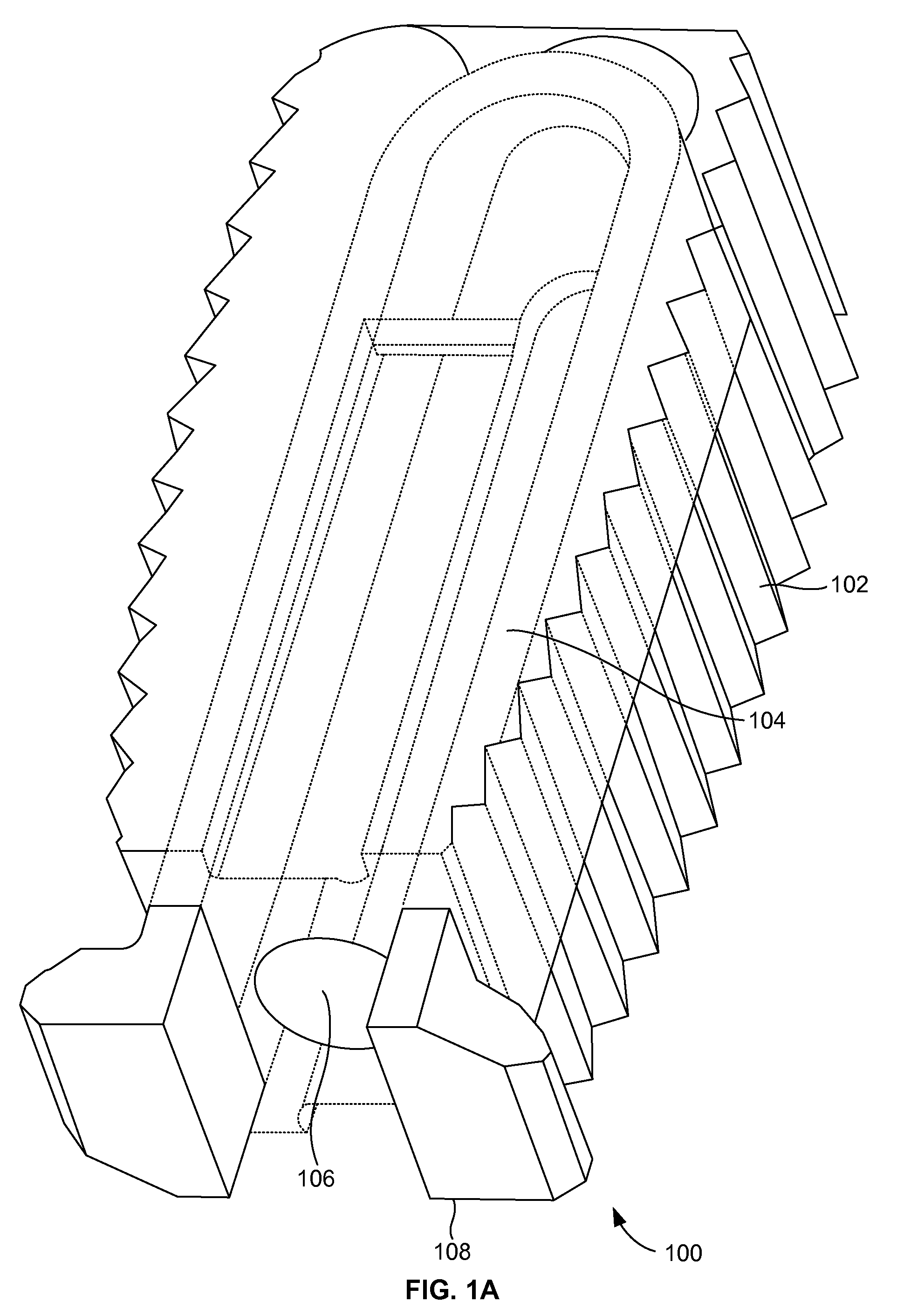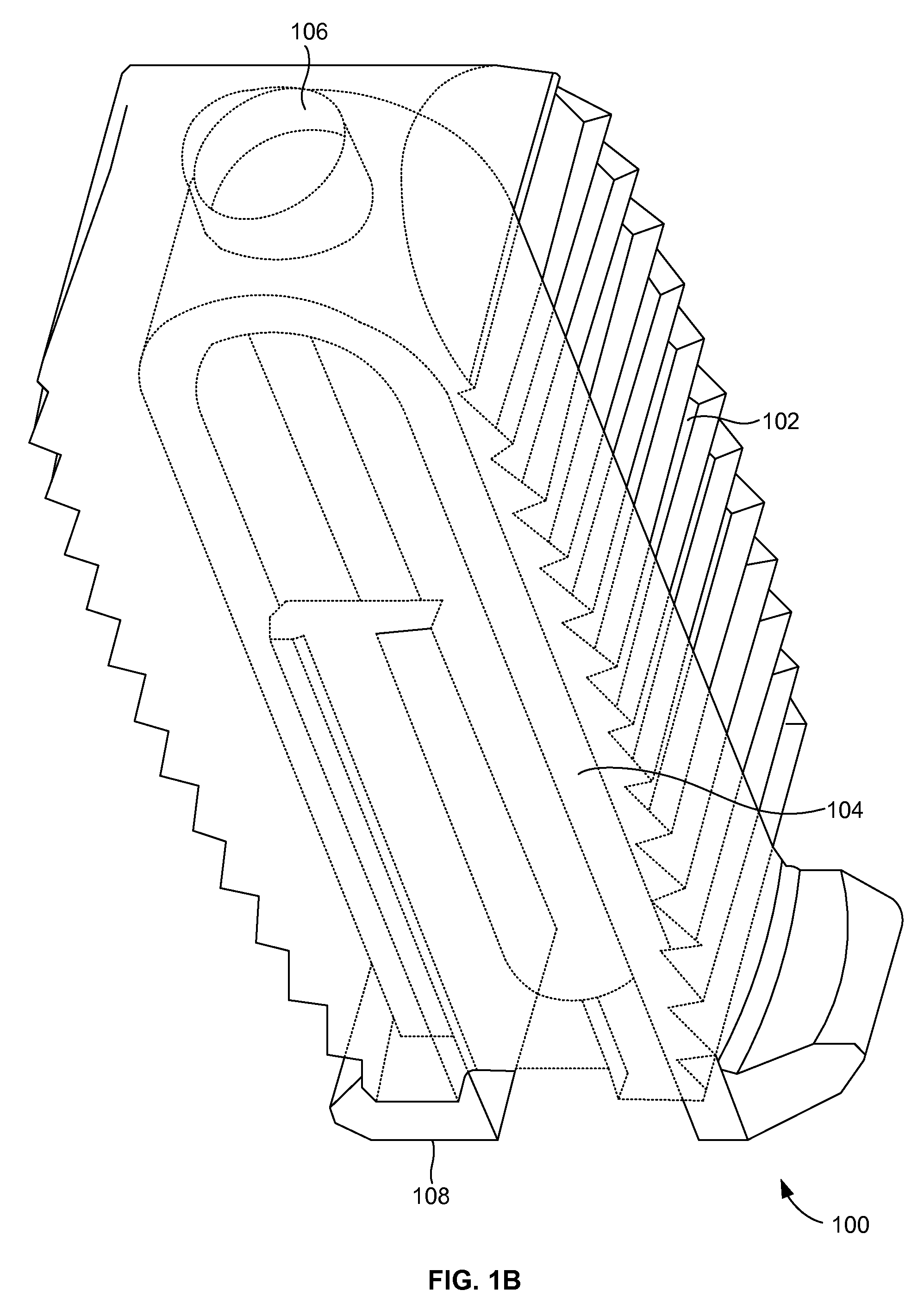Compliant interbody fusion device with deployable bone anchors
a fusion device and bone anchor technology, applied in the field of spine stabilization devices, can solve the problems of instability in the vertebrae, instability in the spine, and static size, and achieve the effect of reducing the risk of fracture, and reducing the stability of the bone anchorag
- Summary
- Abstract
- Description
- Claims
- Application Information
AI Technical Summary
Benefits of technology
Problems solved by technology
Method used
Image
Examples
first embodiment
[0024]FIGS. 1A and 1B illustrate a perspective view of a compliant monolithic spinal fusion implant 100 herein. With reference to FIGS. 1A and 1B, the compliant monolithic spinal fusion implant 100 includes a compliant monolithic body 102, a support member 104, a longitudinal hole 106 along the vertical length of the support member 104, and flanges 108 located near the opening of the hole 106. The compliant monolithic spinal fusion implant 100 may be inserted anteriorly, posteriorly, or transforaminal in between vertebral bodies of the spine.
[0025]The longitudinal hole 106 along the vertical length of the clip shaped support member 104 enables the support member 104 to sustain a heavy load and flex freely. A cephalad and a caudal surface of the compliant monolithic spinal fusion implant 100 may be molded with a surface finish (e.g., teeth, geometry, or serrations) to provide an additional fixation with endplates (not shown). In one embodiment, the support member 104 is embodied as ...
second embodiment
[0028]FIGS. 2A and 2B illustrate a perspective view of a compliant monolithic spinal fusion implant 200 herein. The compliant monolithic spinal fusion implant 200 includes a compliant monolithic body 202, a support member 204, a longitudinal hole 206 along the vertical length of the I-shaped support member 204, and flanges 208. The support member 204 may allow more rigidity and support through the middle of the support member 204 which acts as a living-hinge in flexion-extension.
[0029]In one embodiment, the support member 204 is an I-shaped support member. The support member 204 may also be cut in both the front and side planes to allow two degrees of freedom, acting as a joint that can bend in both the sagital and transverse planes. The longitudinal hole 206 along the vertical length of the support member 204 may enable the support member 204 to sustain a heavy load and flex freely. The flanges 208 on the end of the support member 204 may dig into endplates (not shown) to provide ...
third embodiment
[0030]FIGS. 3A and 3B illustrate a perspective view of a compliant monolithic spinal fusion implant 300 herein. The compliant monolithic spinal fusion implant 300 includes a compliant monolithic body 302, a rod 304 longitude to the compliant monolithic body 302 with a plurality of symmetric spikes 306, and windows 308. The rod 304 is insert-molded in the compliant monolithic body 302. The spikes 306 are attached to the rod 304 perpendicular to the main axis of the rod 304.
[0031]The windows 308 are molded in the compliant monolithic body 302 to enable the rod 304 to rotate from a horizontal to a vertical configuration. In the vertical configuration, the spikes 306 penetrate the end plates (not shown) to fix the compliant monolithic body 302 in place. The rod 304 may be rotated with an appropriate driving instrument (not shown).
PUM
 Login to View More
Login to View More Abstract
Description
Claims
Application Information
 Login to View More
Login to View More - R&D
- Intellectual Property
- Life Sciences
- Materials
- Tech Scout
- Unparalleled Data Quality
- Higher Quality Content
- 60% Fewer Hallucinations
Browse by: Latest US Patents, China's latest patents, Technical Efficacy Thesaurus, Application Domain, Technology Topic, Popular Technical Reports.
© 2025 PatSnap. All rights reserved.Legal|Privacy policy|Modern Slavery Act Transparency Statement|Sitemap|About US| Contact US: help@patsnap.com



